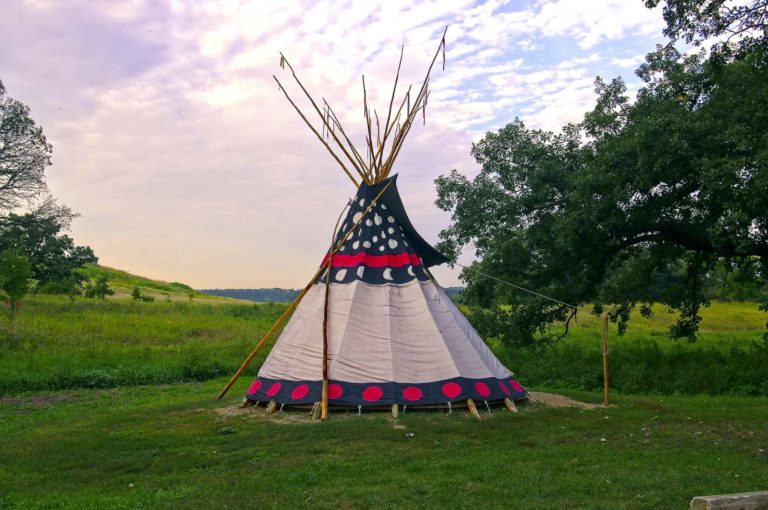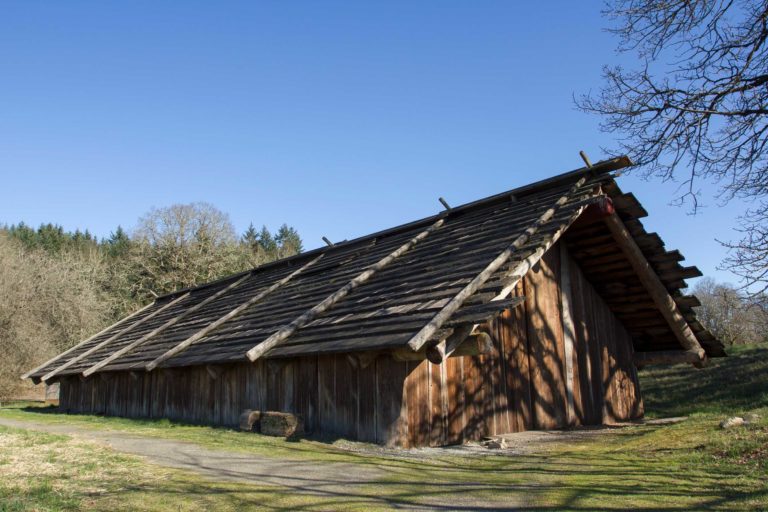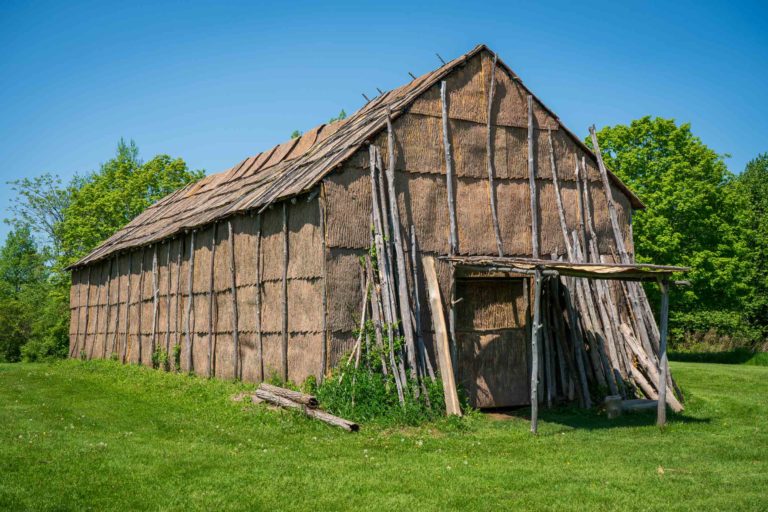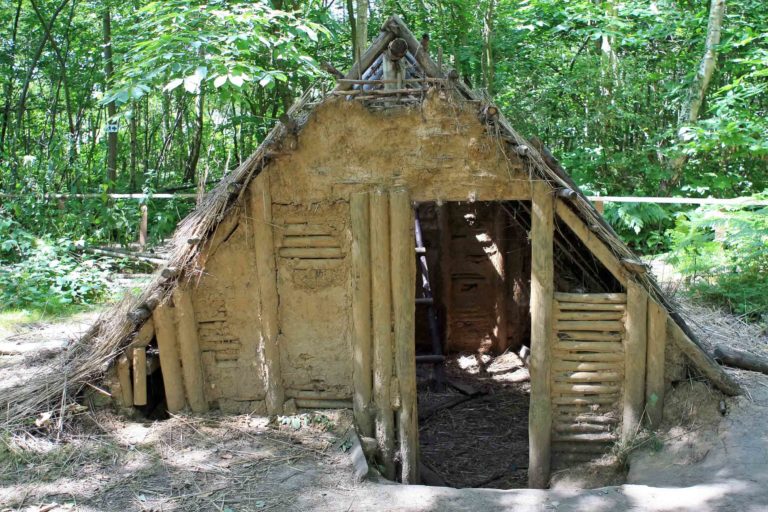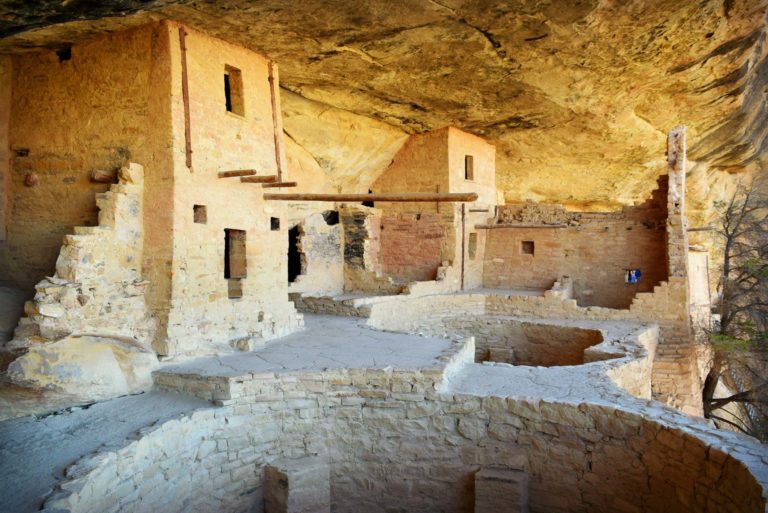Henry François Farny, Indian Encampment (detail), 1911
Overview
Life for Native People in the southeastern part of North America before European contact was focused on survival and living cohesively* with the land. Most Native American groups survived on hunting, gathering and crop growing. In this module you will learn information about Native American lives before European contact.
*Cohesive is the act of state of sticking together tightly; unity
Resources
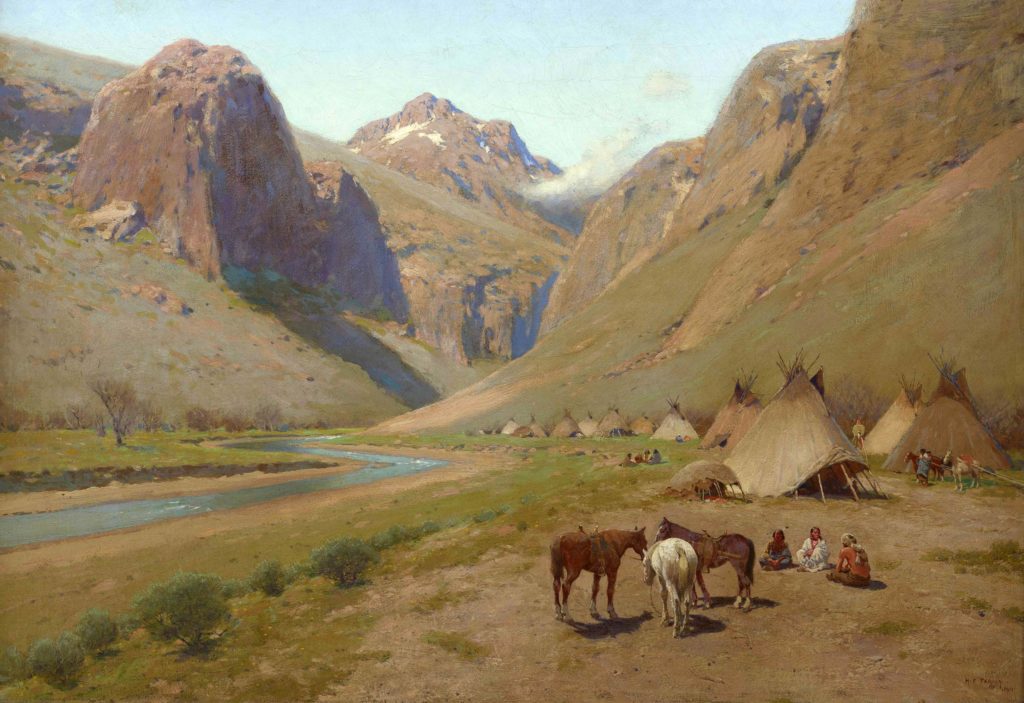

Pre-Columbian Life (meaning before Columbus or European contact)
Native Peoples had inhabited this area for 14,000 years before outsiders arrived. That is 700 generations of people even before the first Europeans touched ground. The Creek Indians, along with other southeastern tribes such as the Choctaws, Chickasaw, and Cherokees, are descended from the peoples of the Mississippian period (ca. AD 800-1500), known for its giant earthen mounds and complex hierarchical* social structure. In the sixteenth century, the arrival of Europeans brought epidemics and widespread warfare and violence to the Southeast, resulting in the scattering of the region’s Indigenous Peoples. Beginning in the seventeenth century, these diverse populations joined together and established settlements along the central Chattahoochee River, the lower Tallapoosa River, and the central Coosa River in what is now east-central Alabama.
*Hierarchical is when people or things are arranged in order of rank or importance
Agriculture and living off the land
Agriculture has been practiced in what is now Alabama for centuries. Prehistoric Native Americans practiced slash-and-burn agriculture, in which they cut and burned forests to make room for their patches of corn, beans, and squash. A large part of the Southeastern Culture is preserving the earth and not taking more than what is needed, this applies to stock, crops (and growing crops), and plants in order to maintain a certain balance within the environment. Natives were known to utilize all parts of the animal so that nothing went to waste. For example, a deer could be used for the meat, the hide may be used for clothing, and the hooves would be used for shakers*.
To see a tribe member wearing shakers, reference the Virtual Paper Doll activity linked below.
*Shakers are used by a variation of Southeastern Native Americans for traditional stomp dances. Previously made from deer toes, current day shakers are now made from turtle shells or cans. Pebbles are placed inside of the turtle shell or cans and worn on the legs of Indigenous women. The Shakers create a rhythmic sound for the ceremony.
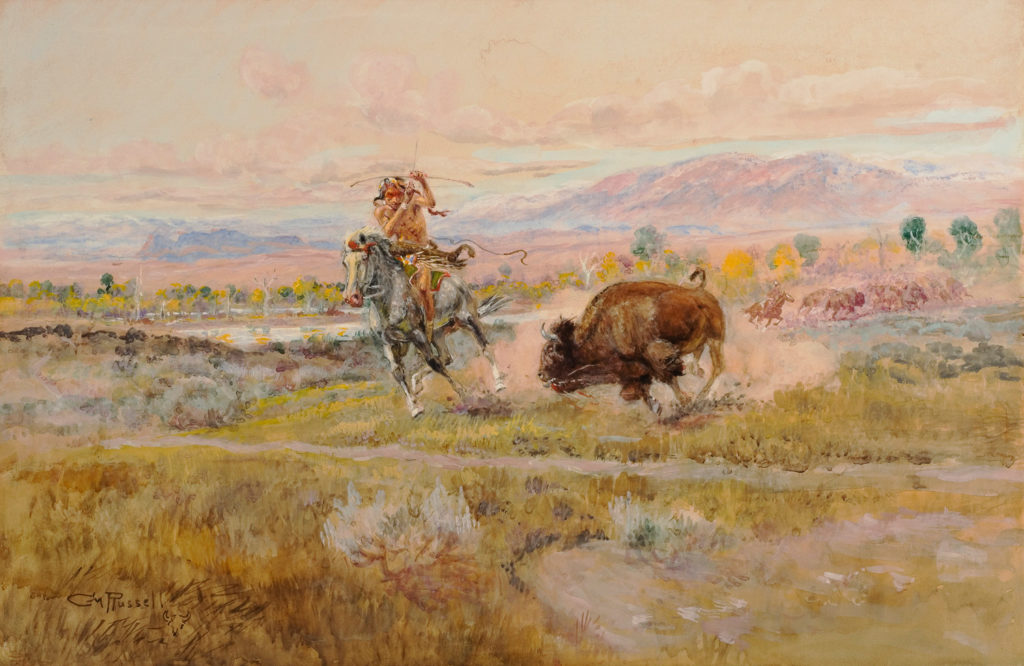

Though this piece in the Museum’s collection represents a plains Indian (one living in the plains of the midwest United States) and shows a brave hunting a buffalo it also represents a very stereotypical* view of what most people think a Native American looks like. There were groups of Native Americans all over the country who had their own traditions, beliefs and way of life. For example, the historic tribes of the southeastern United States did not come into contact with bison (until later when they migrated to the southeast for food). Their diet consisted of deer, fish and other game and vegetation native to this area. The plains Indians however, relied on buffalo not only for food but also for clothing, shelter and other necessities. The buffalo was hunted to near extinction by white settlers and buffalo hunters by 1890. Profiteers would sell tickets to easterners who would ride a train through the plains and hunt buffalo through the windows of the train. Buffalo hunters would then collect the hides and skulls from the fallen animals for money leaving the carcasses to rot. Estimates show that at their lowest, numbers dropped to 540. Luckily, preservation efforts have been made and bison are now protected.
Native clothing and textiles are important because it helps define a person or group’s identity. As mentioned earlier, stereotyping or generalizations are a problem surrounding Native communities. Each tribe has their own language, clothing, and practices. Just like each tribe has their own way of life, each tribe has their own reason and symbolism in their clothing, music, art, and other cultural practices.
*Stereotypical relates to a widely held and oversimplified image or idea of a person or thing
Regional Housing Types
Where people live plays a large factor in what kinds of housing they live in. Although today many houses look similar no matter what state you live in, in the United States there are still different types of homes. For example, homes built near water can sometimes be built on stilts to stay clear of rising water levels. Homes in snowy climates often have steeper slopes of the roofs to keep snow from accumulating. Before European contact Native American tribes across North America also built homes that best suited their lifestyle.
Before having your student complete the worksheet, have them research traditional types of Native American housing.


